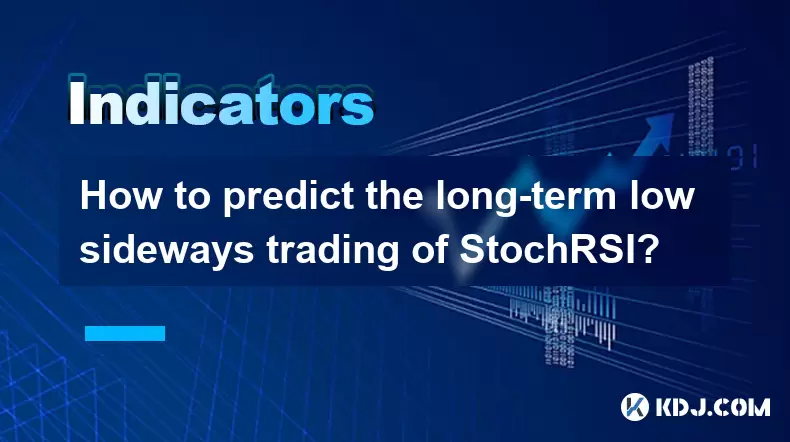-
 Bitcoin
Bitcoin $111,259.5910
2.32% -
 Ethereum
Ethereum $2,789.1977
6.17% -
 Tether USDt
Tether USDt $1.0006
0.06% -
 XRP
XRP $2.4172
3.88% -
 BNB
BNB $671.6585
1.21% -
 Solana
Solana $157.1336
2.90% -
 USDC
USDC $1.0001
0.02% -
 TRON
TRON $0.2913
1.52% -
 Dogecoin
Dogecoin $0.1809
5.04% -
 Cardano
Cardano $0.6213
4.40% -
 Hyperliquid
Hyperliquid $41.7572
6.29% -
 Sui
Sui $3.1623
8.35% -
 Bitcoin Cash
Bitcoin Cash $513.7819
1.17% -
 Chainlink
Chainlink $14.2966
1.64% -
 Stellar
Stellar $0.2904
9.82% -
 UNUS SED LEO
UNUS SED LEO $8.9624
-0.86% -
 Avalanche
Avalanche $19.4161
5.41% -
 Hedera
Hedera $0.1754
8.17% -
 Shiba Inu
Shiba Inu $0.0...01243
4.58% -
 Toncoin
Toncoin $2.8743
2.25% -
 Litecoin
Litecoin $90.6242
3.12% -
 Monero
Monero $328.7483
3.34% -
 Polkadot
Polkadot $3.6433
5.06% -
 Dai
Dai $1.0002
0.02% -
 Ethena USDe
Ethena USDe $1.0011
0.06% -
 Uniswap
Uniswap $8.3418
8.66% -
 Bitget Token
Bitget Token $4.4331
2.68% -
 Pepe
Pepe $0.0...01102
8.17% -
 Aave
Aave $297.1705
-0.69% -
 Pi
Pi $0.4712
1.31%
How to predict the long-term low sideways trading of StochRSI?
StochRSI helps crypto traders spot overbought or oversold conditions, but works best when combined with other tools like moving averages and volume analysis to avoid false signals in sideways markets.
Jul 09, 2025 at 07:00 pm

What Is StochRSI and Why Does It Matter?
StochRSI, short for Stochastic RSI, is a momentum oscillator used in technical analysis to identify overbought or oversold conditions in an asset. It combines two popular indicators: the Relative Strength Index (RSI) and the Stochastic Oscillator. In the cryptocurrency market, where price volatility is high, understanding how StochRSI behaves becomes crucial.
When applied correctly, StochRSI helps traders anticipate potential trend reversals by analyzing when an asset may be overbought (typically above 0.8) or oversold (below 0.2). However, during prolonged sideways or range-bound markets, StochRSI can oscillate repeatedly within these zones without clear directional movement, making it challenging to predict long-term lows accurately.
Identifying Long-Term Low Sideways Trading Patterns
To predict long-term low sideways trading using StochRSI, one must first understand what constitutes a "low sideways" phase. This occurs when an asset's price consolidates within a narrow range over an extended period, showing minimal upward or downward bias. During this time:
- StochRSI often fluctuates between 0.2 and 0.8 without breaking out decisively
- There are frequent false signals due to repeated overbought/oversold readings
- Volume tends to decrease significantly, indicating a lack of conviction from buyers or sellers
In such scenarios, relying solely on StochRSI crossovers or threshold breaches can lead to misleading signals. Traders should instead look for confluence with other tools like moving averages, support/resistance levels, and volume patterns to filter out noise.
Combining StochRSI with Other Indicators for Better Accuracy
Using StochRSI alone may not be sufficient to confirm long-term lows in sideways trading environments. A more robust approach involves combining it with complementary indicators:
- Moving Averages (MA): When the price consolidates near key MAs (e.g., 50-day or 200-day), and StochRSI shows bullish divergence, it could signal a potential breakout.
- Bollinger Bands: If the price is hugging the lower band while StochRSI begins to rise from oversold territory, it might indicate a reversal is imminent.
- Volume Analysis: A surge in volume during a StochRSI bounce from oversold levels can validate a genuine shift in sentiment rather than a false rally.
By integrating these tools, traders can filter out misleading StochRSI signals and better identify when a long-term low may be forming in a sideways market.
Recognizing Divergence as a Key Signal
One of the most reliable ways to interpret StochRSI in sideways trading phases is through divergence analysis. Divergence occurs when the price makes a new high or low, but the indicator does not confirm it. For example:
- Bullish Divergence: Price makes a lower low, but StochRSI makes a higher low, suggesting underlying strength despite sideways movement
- Bearish Divergence: Price makes a higher high, but StochRSI makes a lower high, signaling weakening momentum
During long-term consolidation, divergence can appear multiple times before a real trend emerges. Therefore, patience and confirmation from other indicators are essential. Divergence combined with increasing volume or a break of key support/resistance levels increases the probability of a meaningful move.
Practical Steps to Apply StochRSI in Range-Bound Crypto Markets
For traders aiming to use StochRSI effectively in long-term sideways crypto markets, here is a step-by-step guide:
- Set the StochRSI parameters to default (14-period RSI, 3-period smoothing) unless backtesting suggests otherwise
- Overlay support and resistance levels to identify areas where price is likely to reverse
- Watch for repeated tests of the 0.2 and 0.8 thresholds — these can highlight potential turning points
- Use candlestick patterns (like pin bars or engulfing candles) to confirm StochRSI-based reversal signals
- Monitor volume spikes that accompany StochRSI movements, especially near key price zones
- Avoid taking trades based solely on StochRSI crossing its signal line; always wait for confirmation from other sources
This structured approach allows traders to avoid premature entries and increase the accuracy of StochRSI signals in non-trending markets.
Frequently Asked Questions
Q: Can StochRSI be used on all cryptocurrencies?
Yes, StochRSI can be applied to any cryptocurrency chart, but its effectiveness varies depending on the asset’s liquidity and volatility. Highly volatile or thinly traded assets may produce more erratic StochRSI readings, requiring additional filters for reliability.
Q: How do I adjust StochRSI settings for better performance in sideways markets?
While the default settings (14-period RSI, 3-period smoothing) work well generally, traders can experiment with shorter periods (e.g., 7 or 10) to make the indicator more responsive. However, shorter periods may increase false signals, so backtesting is recommended before applying changes live.
Q: Should I ignore StochRSI during strong trending markets?
Not necessarily. StochRSI can still provide useful insights during trends, especially when identifying exhaustion points. For example, in a strong uptrend, StochRSI lingering in overbought territory for extended periods is normal. Only when divergence appears should traders consider a possible reversal.
Q: How important is volume when interpreting StochRSI in sideways markets?
Volume plays a critical role in validating StochRSI signals, particularly in sideways markets. A rising StochRSI accompanied by increasing volume suggests real buying pressure, whereas a similar movement with shrinking volume may be a false signal. Always cross-reference volume data for stronger trade setups.
Disclaimer:info@kdj.com
The information provided is not trading advice. kdj.com does not assume any responsibility for any investments made based on the information provided in this article. Cryptocurrencies are highly volatile and it is highly recommended that you invest with caution after thorough research!
If you believe that the content used on this website infringes your copyright, please contact us immediately (info@kdj.com) and we will delete it promptly.
- ₹50 Coin Conundrum: Public Preference and the Delhi High Court
- 2025-07-10 14:30:11
- PumpFun's PUMP Token: ICO Buzz and Price Prediction
- 2025-07-10 14:50:12
- Bitcoin's Back: Record High Explained, NYC Style
- 2025-07-10 15:10:12
- BlockDAG Presale: Poised for a 30x Upside in 2025?
- 2025-07-10 15:10:12
- Crypto Trading's New Frontier: Security and Deep Liquidity Take Center Stage
- 2025-07-10 14:30:11
- XRP Price: Bull Market Continuation or Korea vs. the World?
- 2025-07-10 14:55:12
Related knowledge

How to trade Dogecoin based on funding rates and open interest
Jul 07,2025 at 02:49am
Understanding Funding Rates in Dogecoin TradingFunding rates are periodic payments made to either long or short traders depending on the prevailing ma...

What is the 'God Mode' indicator for Bitcoincoin
Jul 07,2025 at 04:42pm
Understanding the 'God Mode' IndicatorThe 'God Mode' indicator is a term that has emerged within cryptocurrency trading communities, particularly thos...

Using Gann Fans on the Dogecoin price chart
Jul 07,2025 at 09:43pm
Understanding Gann Fans and Their Relevance in Cryptocurrency TradingGann Fans are a technical analysis tool developed by W.D. Gann, a renowned trader...

How to spot manipulation on the Dogecoin chart
Jul 06,2025 at 12:35pm
Understanding the Basics of Chart ManipulationChart manipulation in the cryptocurrency space, particularly with Dogecoin, refers to artificial price m...

Bitcoincoin market structure break explained
Jul 07,2025 at 02:51am
Understanding the Dogecoin Market StructureDogecoin, initially created as a meme-based cryptocurrency, has evolved into a significant player in the cr...

How to backtest a Dogecoin moving average strategy
Jul 08,2025 at 04:50am
What is a Moving Average Strategy in Cryptocurrency Trading?A moving average strategy is one of the most commonly used technical analysis tools in cry...

How to trade Dogecoin based on funding rates and open interest
Jul 07,2025 at 02:49am
Understanding Funding Rates in Dogecoin TradingFunding rates are periodic payments made to either long or short traders depending on the prevailing ma...

What is the 'God Mode' indicator for Bitcoincoin
Jul 07,2025 at 04:42pm
Understanding the 'God Mode' IndicatorThe 'God Mode' indicator is a term that has emerged within cryptocurrency trading communities, particularly thos...

Using Gann Fans on the Dogecoin price chart
Jul 07,2025 at 09:43pm
Understanding Gann Fans and Their Relevance in Cryptocurrency TradingGann Fans are a technical analysis tool developed by W.D. Gann, a renowned trader...

How to spot manipulation on the Dogecoin chart
Jul 06,2025 at 12:35pm
Understanding the Basics of Chart ManipulationChart manipulation in the cryptocurrency space, particularly with Dogecoin, refers to artificial price m...

Bitcoincoin market structure break explained
Jul 07,2025 at 02:51am
Understanding the Dogecoin Market StructureDogecoin, initially created as a meme-based cryptocurrency, has evolved into a significant player in the cr...

How to backtest a Dogecoin moving average strategy
Jul 08,2025 at 04:50am
What is a Moving Average Strategy in Cryptocurrency Trading?A moving average strategy is one of the most commonly used technical analysis tools in cry...
See all articles

























































































